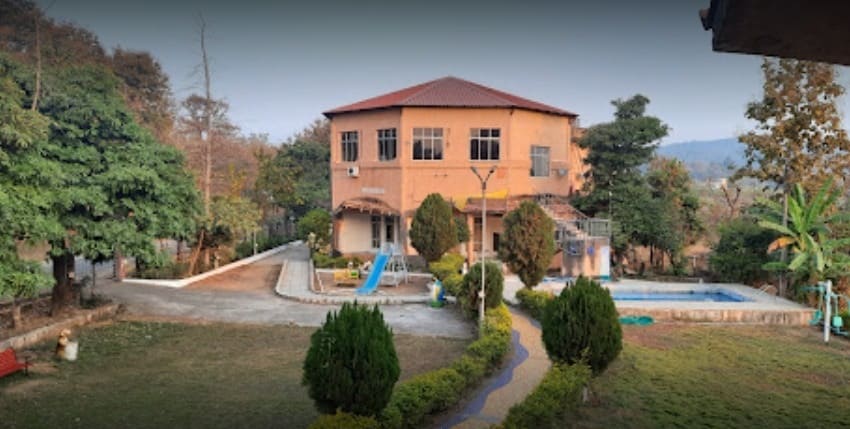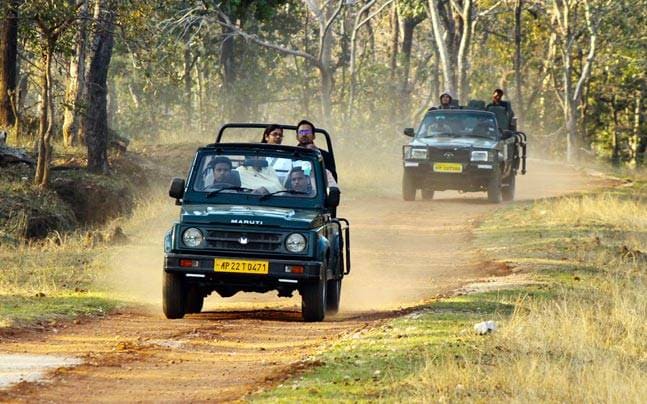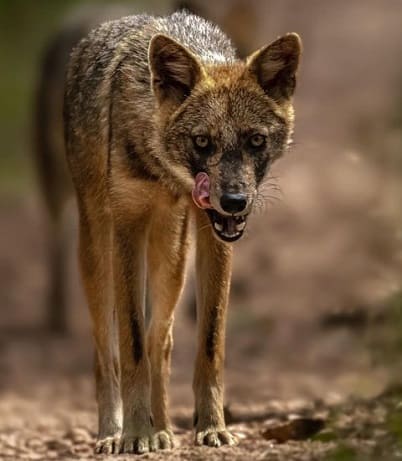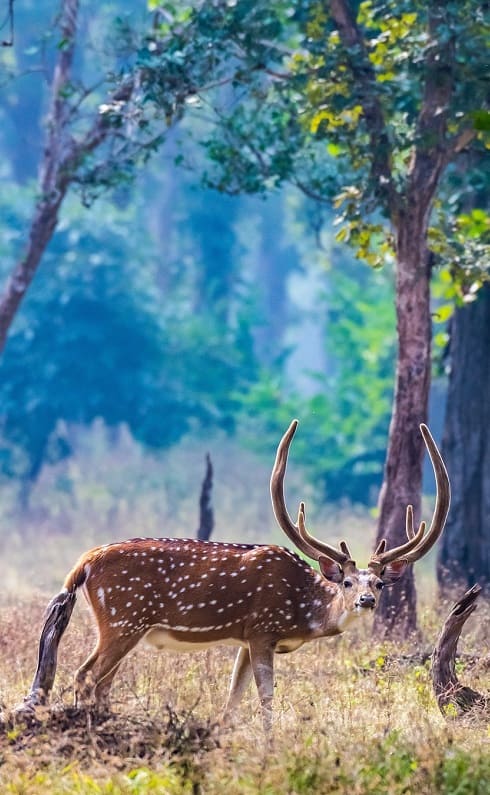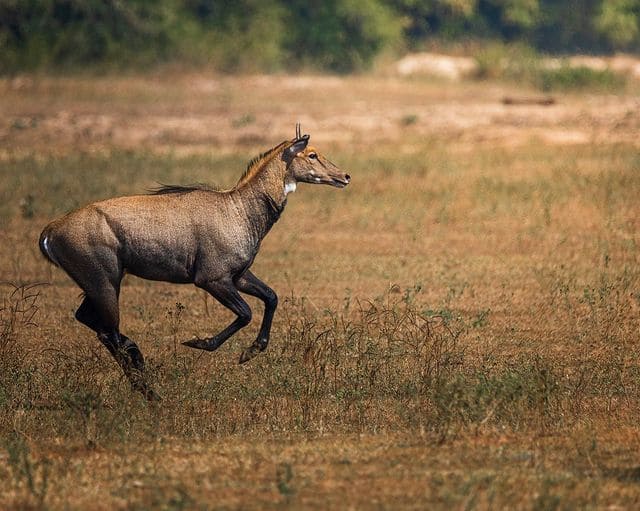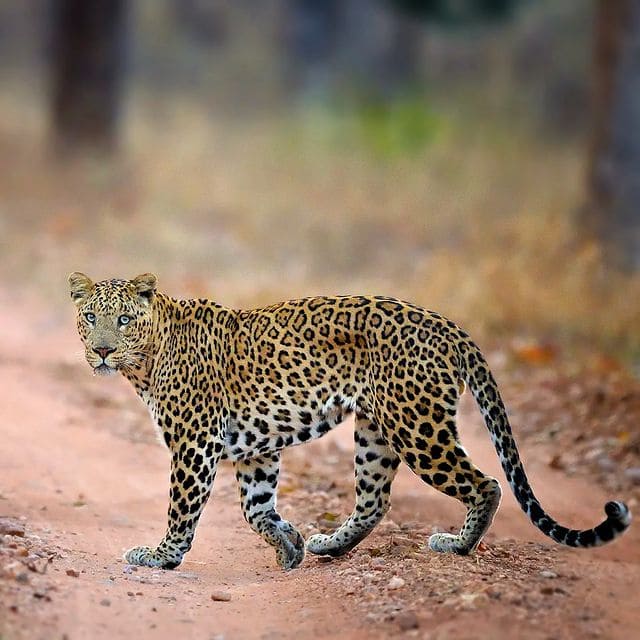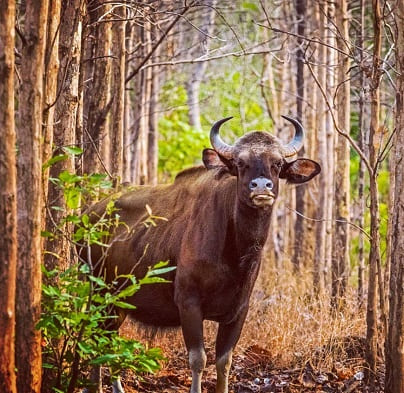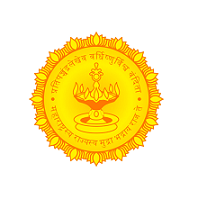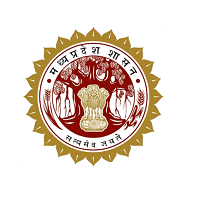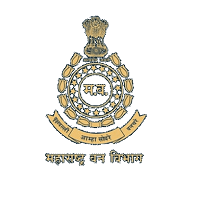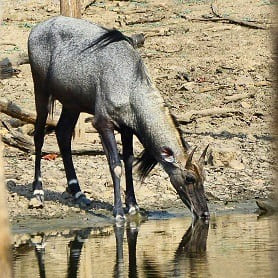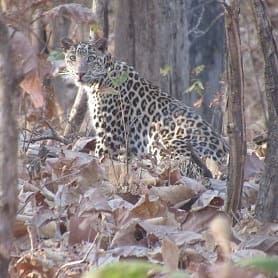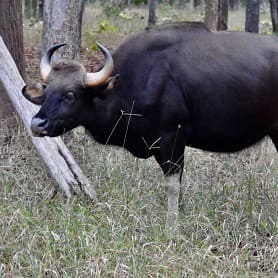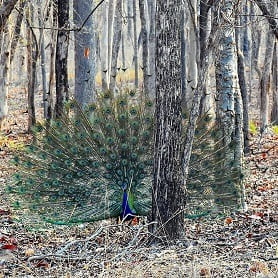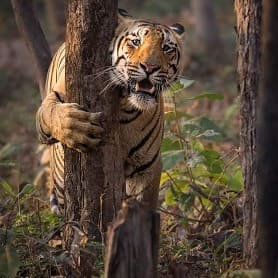

Welcome to Pench Jungle
Welcome to Pench Jungle – A platform to explore you the true essence of Pench National Park, Pench Jungle provides you all the information about Pench Zones, Gates, Wildlife, and Safari Booking and also offer you some good combined options for you tour.
The National Park shares its area with two states i.e. Maharashtra and Madhya Pradesh each state have 7 gates that is separated by 2 zones Core zone and Buffer zone.
Core Zone - This is a legally protected area where human intervention is strictly prohibited. It is an uninterrupted internal system i.e. the inner area of jungle.
Buffer Zone - The area that surrounds or adjoins the core areas where nature is conserved alongside compatible human uses of the land or water.
The Pench Jungle is home to many, there are 70+ Bengal tigers, 39 species of mammal, 13 species of reptile. Commonly seen wildlife is chital, sambar, Nilgai, wild boar, jackal, leopard, sloth bear, Indian wolf, wild dog, porcupine, monkeys, jungle cat, fox, striped hyena, gaur, and barking deer live in the park. The park is rich in bird life as well. According to wildlife authorities, the park is home to more than 210 species.
About Pench Jungle
The Pench Jungle Tiger Reserve landscape consists of rugged, hilly, and flat terrain. There are many rivers, streams and waterfalls. Most of the water sources here are seasonal. Most of the hills are flat from the top, with a magnificent view of the forest. The most famous of these is the Kala Pahar Hills, rising some 2,100 feet [650 m] above sea level. The National Park shares its area with two states i.e. Maharashtra and Madhya Pradesh.
On the Madhya Pradesh side, the Pench Tiger Reserve encompasses a core area of 411.33 Sq. Km. with a buffer area of 768 Sq. Km, making for a total protected area of 1179.63 Sq. Km. On the Maharashtra side, the Pench Tiger Reserve has a core habitat area of 257.3 Sq. Km. along with a buffer area of 483.96 Sq. Km. making for a total core area 741.2 Sq. Km. Spanning over a total protected region of over 1920 Sq. Km. The Totladoh reservoir built on the Pench River is a major water source for wildlife during the summer season.
Wildlife that flourish in the Jungle
Reptiles
Mammals
Total Species
Shots from
Pench Jungle

Maharashtra Gates
Gates & Zones of the Maharashtra side of Pench Jungle
The park is divided into 7 gates.
Sillari, Chorbahuli, & Khursapar are Core area
Surewani, Kolitmara, Khubala & Paoni are Buffer area
Sillari (Core)
Sillari Gate, Near Paoni Village, NH-44 Nagpur-Seoni Road, Maharashtra 441401.
Khursapar (Core)
Khursapar Gate, Near Morphata Dargha, NH-44 Nagpur-Seoni Road, Maharashtra 441401.
Chorbahuli (Core)
Chorbahuli Gate, Near Chorbahuli Village, NH-44 Nagpur-Seoni Road, Maharashtra 441401.
Saleghat (Buffer)
Saleghat Gate, Near Khapa Village, NH-47 Nagpur Saoner Road, Maharashtra 441101.
Kolitmara (Buffer)
Kolitmara Gate, Near Kolitmara Village, Nagpur to Parshivni Road, Maharashtra 441401.
Surewani (Buffer)
Surewani Gate, Near sironji Village, NH-47 Nagpur Saoner Road, Maharashtra 441101.
Paoni (Buffer)
Paoni Gate, Near Paoni Village, NH-44 Nagpur-Seoni Road, Maharashtra 441401.
Madhya Pradesh Gates
Gates & Zones of the Madhya Pradesh side of Pench Jungle
The park is divided into 7 gates.
Turia, Karmajhiri, Jamtara are Core area
Khawasa, Masurnala, Khumbhpani, Rukhad, Teliya are Buffer area
Turia (Core)
Turia gate, Near Khawasa Village, NH-44 Nagpur-Seoni Road, Madhya Pradesh 480881.
Karmajhiri (Core)
Kamajhiri gate, Near Khawasa Village, NH-44 Nagpur-Seoni Road, Madhya Pradesh 480881.
Jamtara (Core)
Jamtara gate, Near Jamtara Village, Chhindwara district, Madhya Pradesh 480110.
Khawasa (Buffer)
Khawasa gate, Near Khawasa Village, NH-44 Nagpur-Seoni Road, Madhya Pradesh 480881.
Khumbhpani (Buffer)
Khumbhpani gate Near Jamtara Village, Chhindwara district, Madhya Pradesh 480110.
Rukhad (Buffer)
Rukhad gate, Near Rukhad Villageis, NH-44 Nagpur-Seoni Road, Madhya Pradesh 480881.
Teliya (Buffer)
Teliya gate, Near Morphata Dargha, NH-44 Nagpur-Seoni Road, Maharashtra 480881.
Collarwali Remembering India’s ‘super mum’ tigress
Pench Tiger Reserve's famous 'collarwali Tigress,' who gave to 29 cubs and earned the title of 'supermom,' died at the age of 16 after prolonged illness on January 15 2022.
Collarwali named because of the radio collar she wore. She became one of India's best-known tigers after starring in the BBC Wildlife documentary, Spy in the Jungle, which tracked the lives of four tiger cubs over two years.
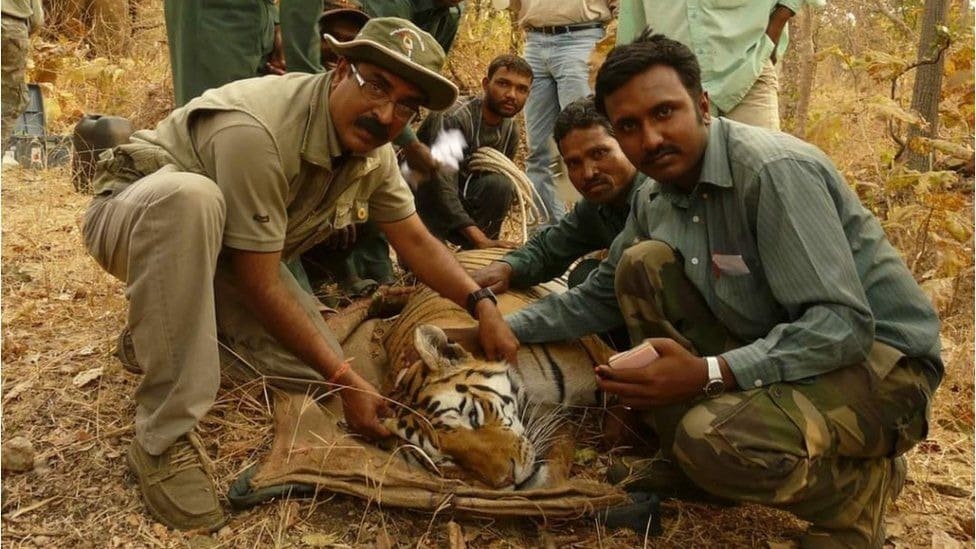
Vision Of Our Leaders

"I salute all those working towards wildlife protection. Be it lions, tigers and leopards, India is seeing a steady rise in the population of various animals. We should do everything possible to ensure protection of our forests and safe habitats for animals".
- PM Shri Narendra Modi

Maharashtra Chief Minister Devendra Fadnavis has consistently emphasized the importance of forest conservation and environmental protection. In May 2025, he praised the Supreme Court’s decision on “zudpi jungle” lands as a historic step balancing development with ecology. On World Environment Day 2025, he urged citizens to make tree plantation a mass movement, setting a goal of planting 100 million trees in two years. By October 2025, Fadnavis highlighted the success of anti-extremism efforts in Gadchiroli, noting that the once-violence-stricken forests are now embracing peace. His initiatives reflect a vision of sustainable growth rooted in environmental stewardship.
- CM Shri Devendra Fadnavis

In October 2025, Maharashtra Forest Minister Ganesh Naik faced controversy after revealing that he had once kept a deer fawn and leopard cubs as pets before taking office. He clarified that he had released the animals upon becoming minister and that his remarks were misunderstood as a gesture of affection for wildlife. The statement sparked a political uproar, with opposition leaders demanding his resignation and legal action. Critics cited the Wildlife Protection Act, which prohibits keeping wild animals without authorization. Naik later emphasized that wild creatures belong in their natural habitats and denied ever possessing them illegally.
- CM Shri - Ganesh Naik

Madhya Pradesh Chief Minister Mohan Yadav has prioritized environmental protection, biodiversity promotion, and eco-tourism development as key elements of the state’s growth strategy. On World Environment Day 2025, he emphasized that Madhya Pradesh’s forests, rivers, and wildlife are “not just resources, but our identity and responsibility.” In September 2025, during a State Wildlife Board meeting, Yadav approved plans to transfer tigers to states like Odisha, Rajasthan, and Chhattisgarh. He proposed reciprocal exchanges to enhance biodiversity, including efforts to bring one-horned rhinoceroses from Assam. His initiatives reflect a vision of ecological balance tied closely to state pride and sustainable development.
- CM Shri - Mohan Yadav

Madhya Pradesh Forest Minister Kunwar Vijay Shah has called for a peaceful, cooperative approach to address deforestation in Burhanpur. He emphasized that tribals are an integral part of the nation and should not face harsh measures. Instead, he advocated finding a balance between forest protection and community welfare. Acknowledging rising land pressures as a cause of deforestation, Shah urged for public dialogue and collective responsibility. He reaffirmed the government’s commitment to both environmental conservation and social harmony, stressing that protecting nature must be achieved without violence and through sustainable, inclusive efforts.
- Minister for Forests - Kunwar Vijay Shah


Visitors Experience
Latest Posts

5 Exciting Things In Pench Other Than Wildlife!

The 4 Prominent Gates of The Pench Jungle

Know the way a Tiger hunts




